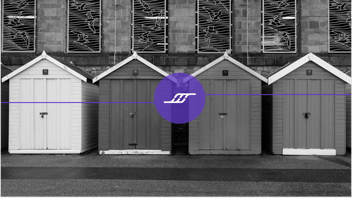On June 18th, Infostrux CEO, Goran Kimovski (Kima) sat down with S. Somasegar (Soma) to discuss Soma’s experience and lessons as a board member and early investor in Snowflake. Kima and Soma discuss the concept and value of the data cloud and why data exchange will be as important as data warehousing. As an active angel investor and seed investor, Soma describes what makes a great investment and what he looks for while investing in both enterprise and consumer segments.
![]() Kima: You mentioned the separation of storage and computers, which is a key strength that drove some of Snowflake’s growth so far. What do you think are some of Snowflake’s key strengths today that will drive opportunities for growth over the next few years?
Kima: You mentioned the separation of storage and computers, which is a key strength that drove some of Snowflake’s growth so far. What do you think are some of Snowflake’s key strengths today that will drive opportunities for growth over the next few years?
![]() Soma: That’s a great question. When Snowflake started, it was all about building a data warehousing solution, built for the cloud. They started with a fresh design from scratch that’s a cloud-based service that takes advantage of all the attributes of the cloud. It was primarily a data warehouse installation.
Soma: That’s a great question. When Snowflake started, it was all about building a data warehousing solution, built for the cloud. They started with a fresh design from scratch that’s a cloud-based service that takes advantage of all the attributes of the cloud. It was primarily a data warehouse installation.
Over a period of time, they started thinking about a huge problem in the world of data, which is the ability to share data across teams, companies, and organizations. Historically, the way that most people would do it would be to use some ETL set of tools, import some data from a database or a data store, do some magic, send it over the wire on the other side, do some more magic, and import it into another system… It was just a painful and costly process and not the most reliable operation for sharing data.
In a world of interconnected SaaS products, there is more and more requirement and demand for people to want to be able to share data seamlessly. In my opinion, it has been a problem that has largely been unsolved for the last 30 or 40 years.
Snowflake came out with a view, architecture, and a solution that makes this possible. They did put a constraint, which is you need to have Snowflake on both ends. I need to have Snowflake and you need to have Snowflake and then sharing data is a no-brainer. If you are a Snowflake customer, you can share data in a very seamless way. You can decide whether you want to share your entire data set, a portion of your data set, or whatever you want to be able to do. As long as the other person has a Snowflake account, sharing becomes instantaneous and seamless.
In time, data sharing could be as large as data warehousing in some sense. That was the next step that Snowflake did. Suddenly we felt there was more energy and optimism, and the potential doubled in some sense.
As the company started evolving, it really expanded its vision. It saw an opportunity to become a data cloud platform that enables a variety of scenarios, a variety of storage capabilities, including unstructured data storage capability. Think about relational data, the non-relational data, analytics data, think about what the next generation application developers want to do with a storage system like Snowflake. So really, making the evolution to a full-fledged data cloud platform. This is why I think Snowflake has an amazing amount of potential for the coming decades.
![]() Kima: Data sharing is one of my favourite subjects that I like talking to customers about. It’s a new way of integrating data across businesses. I know some companies are even looking to put the whole supply chain on a private exchange.
Kima: Data sharing is one of my favourite subjects that I like talking to customers about. It’s a new way of integrating data across businesses. I know some companies are even looking to put the whole supply chain on a private exchange.




